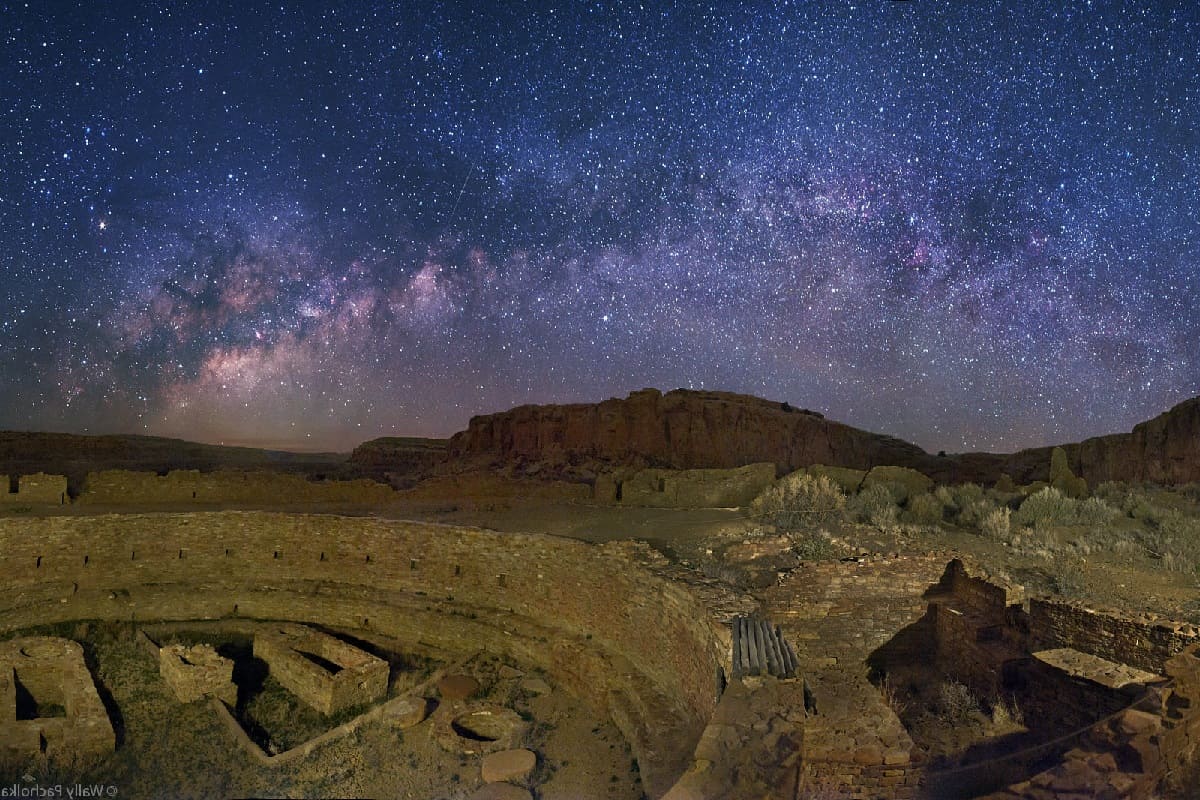Mystery Stargazing Stones Of Chaco Canyon

Have you ever wondered about the mystery stargazing stones of Chaco Canyon? These ancient rocks have puzzled scientists and historians for years. Nestled in the heart of New Mexico, Chaco Canyon was once a bustling hub for the Ancestral Puebloans. The stones, strategically placed, seem to align with celestial events like solstices and equinoxes. Were they used for tracking time, religious ceremonies, or something else entirely? Theories abound, but no one knows for sure. Join us as we delve into the enigma of these stones and uncover what makes them so special. Ready to learn more? Let's get started!
Unveiling the Stargazing Stones
Chaco Canyon, located in northwestern New Mexico, is a place of mystery and wonder. The ancient Puebloans who lived here left behind incredible structures and artifacts, including the enigmatic stargazing stones. These stones are believed to have been used for astronomical observations, aligning with celestial events. Let's explore some of the most fascinating stargazing stones in Chaco Canyon.
1. Fajada Butte
Fajada Butte stands as one of the most iconic landmarks in Chaco Canyon. This towering rock formation is home to the famous "Sun Dagger" petroglyph, a series of spiral carvings that align with sunlight during solstices and equinoxes. The interplay of light and shadow on these carvings marks important astronomical events, showcasing the advanced knowledge of the ancient Puebloans.
2. Casa Rinconada
Casa Rinconada is a massive kiva, or ceremonial structure, that features precise architectural alignments with celestial bodies. The kiva's entrance aligns with the rising sun during the summer solstice, while other features correspond to lunar cycles. This alignment suggests that Casa Rinconada was used for both ceremonial and astronomical purposes, making it a key site for understanding the stargazing practices of the ancient inhabitants.
3. Pueblo Bonito
Pueblo Bonito, the largest and most famous of the Chacoan great houses, contains numerous stargazing stones and alignments. One of the most intriguing features is the "Pueblo Bonito Sun Dagger," a set of stones that cast shadows marking the solstices and equinoxes. This sophisticated system indicates that the inhabitants of Pueblo Bonito had a deep understanding of solar and lunar cycles.
4. Una Vida
Una Vida, one of the earliest great houses in Chaco Canyon, also contains evidence of astronomical observations. The layout of the structure and the placement of certain stones suggest alignments with the sun and moon. Researchers believe that Una Vida's inhabitants used these alignments to track time and plan agricultural activities, highlighting the practical applications of their stargazing knowledge.
5. Chetro Ketl
Chetro Ketl, another impressive great house, features several stargazing stones and alignments. The building's orientation and the placement of specific stones indicate a connection to solar and lunar events. These alignments would have been crucial for ceremonial purposes and agricultural planning, underscoring the importance of astronomy in Chacoan society.
6. Kin Kletso
Kin Kletso, a smaller great house in Chaco Canyon, also contains evidence of astronomical alignments. The structure's orientation and the positioning of certain stones suggest that its inhabitants used it for stargazing and tracking celestial events. This site provides further insight into the widespread practice of astronomy among the ancient Puebloans.
7. Tsin Kletsin
Tsin Kletsin, located on the South Mesa, is another site with significant astronomical alignments. The placement of stones and the orientation of the structure indicate a connection to solar and lunar cycles. These alignments would have been essential for both ceremonial and practical purposes, demonstrating the advanced astronomical knowledge of the Chacoan people.
8. Wijiji
Wijiji, a smaller and less well-known great house, also features stargazing stones and alignments. The structure's layout and the positioning of certain stones suggest that its inhabitants used it for observing celestial events. This site adds to the growing body of evidence that astronomy played a crucial role in Chacoan society.
9. Hungo Pavi
Hungo Pavi, another great house in Chaco Canyon, contains several stargazing stones and alignments. The building's orientation and the placement of specific stones indicate a connection to solar and lunar events. These alignments highlight the importance of astronomy in the daily lives and ceremonial practices of the ancient Puebloans.
10. Penasco Blanco
Penasco Blanco, perched on a high mesa, offers stunning views of the surrounding landscape and the night sky. The site's layout and the placement of certain stones suggest that it was used for stargazing and tracking celestial events. This location provides a unique perspective on the astronomical practices of the Chacoan people, emphasizing their deep connection to the cosmos.
The Magic of Chaco Canyon's Stargazing Stones
Chaco Canyon's stargazing stones offer a glimpse into ancient civilizations' deep connection with the cosmos. These stones, carefully positioned, reveal how the Chacoans used the stars for navigation, agriculture, and spiritual practices. Visiting this site, you can feel the history and wonder that these stones hold. The alignment with celestial events like solstices and equinoxes shows the advanced understanding of astronomy by these ancient people.
Exploring Chaco Canyon, you not only witness breathtaking landscapes but also uncover the mysteries of a culture that thrived centuries ago. The stargazing stones stand as a testament to human curiosity and ingenuity. Whether you're an astronomy enthusiast or a history buff, Chaco Canyon offers a unique experience that connects you to the past. Don't miss the chance to explore this incredible site and its celestial secrets.

